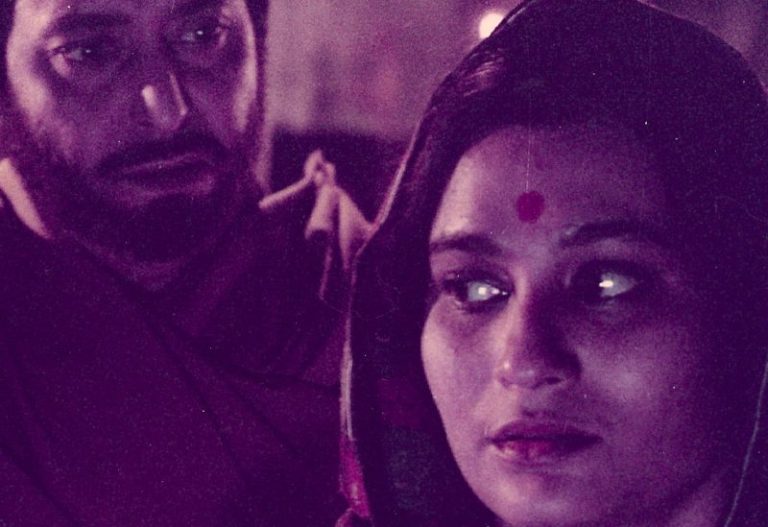new nigerian cinema
est. mid 2000s – now
New Nigerian Cinema, also known as New Nigerian Wave, or Nollywood 2.0, represents a transformative period in the Nigerian film industry. This renaissance, starting in the mid-2000s, signifies a departure from the low-budget, rapid-production approach that characterized earlier Nollywood films. It marks a shift towards higher quality films with improved storytelling, gaining significant international recognition.
Published by: CinemaWaves Team | Filed Under: Film Movements
Origins of the New Nigerian Cinema
Nollywood originated in the early 1990s, during a period of economic challenges in the Nigerian entertainment sector. The collapse of the state-owned television network and the decline of the Nigerian cinema industry created a demand for new forms of entertainment.
Amateur filmmakers began producing films on videocassette, using inexpensive technology to create accessible and affordable movies. The release of “Living in Bondage” in 1992 by Kenneth Nnebue, is cited as the starting point for Nollywood. This low-budget film resonated with audiences through its portrayal of contemporary Nigerian issues, setting the template for subsequent Nollywood productions with quick turnaround, local themes, and direct-to-video distribution.
From the early 1990s to the mid-2000s, Nollywood films were defined by their grassroots approach, often shot quickly with limited resources, and thriving on their strong local demand. Despite the lack of structure and professional training, the industry managed to reach audiences across Nigeria and Africa through informal distribution networks. By the mid-2000s, the limitations of early Nollywood became clear, with films criticized for technical shortcomings and simplistic narratives. The evolving global film landscape and growing local expectations pushed Nigerian filmmakers to finally improve.
The mid-2000s marked a turning point as a new generation of filmmakers emerged. This period, known as the birth of New Nigerian Cinema, focused on improving production values, diversifying storytelling, and gaining grater international recognition.

Characteristics of the New Nigerian Cinema
Improved production quality: New Nigerian Cinema is marked by significant upgrades in production quality, including better cinematography, sound design, and overall technical expertise. This resulted in higher quality films, with bigger budgets, that could compete internationally and be screened at prestigious festivals and theaters worldwide.
Diverse and sophisticated storytelling: The narratives in New Nigerian Cinema are more varied and complex, addressing a wide range of themes and genres. Filmmakers often explore stories that resonate locally, as well as globally, blending traditional African storytelling with modern cinematic approach.
International collaboration and recognition: Films have benefited from international collaborations, bringing experts from other countries. Festivals like TIFF and the Berlin International Film Festival started featuring some Nigerian films, which created more opportunities for Nigerian filmmakers.
Professionalization of the industry: There has been a concerted effort to professionalize the Nigerian film industry with better training for actors, directors, and technical crews. Private sector and government support, through initiatives like “Project ACT Nollywood,” film festivals like AFRIFF, along with professional film schools, provide much needed platforms for education and networking.


Important Filmmakers and Films
Known for films such as “The Figurine” (2009) and “October 1” (2014), Kunle Afolayan has been a pioneer in raising the bar for Nigerian films with his meticulous approach to storytelling and production quality. Kunles films usually explore historical and cultural themes, offering a dive into Nigeria’s past and present.
With her blockbuster film “The Wedding Party” (2016), Kemi Adetiba demonstrated the potential for Nigerian films to achieve massive box office success while maintaining high standards. Her works are known for their vibrant storytelling and relatable characters, focusing on modern Nigerian life and issues.
Niyi Akinmolayan‘s film “The Arbitration” (2016) is an example of the legal drama genre being explored in Nigerian cinema, focusing on strong storytelling and technical proficiency. Akinmolayan’s films typically delve into contemporary societal issues of Nigerian people.
Impact and challenges of the New Nigerian Cinema
New Nigerian Cinema had greatly impacted the cultural landscape of Nigeria. It has reshaped perceptions of African cinema and provided a platform for Nigerian stories to be told with much needed quality.
With the increasing accessibility of digital platforms like Netflix, Amazon Prime, and local streaming services like IrokoTV, Nigerian films are finally reaching wider audiences. This democratization of distribution, combined with continued investment in talent and infrastructure, suggests a bright future for New Nigerian Cinema. Moreover, the Nigerian government’s support through initiatives like the “Project ACT Nollywood” fund has provided financial backing for filmmakers, enabling them to produce on the higher quality. This support, along with private investments, has been crucial in sustaining the growth and development of the industry.
Despite the significant progress, New Nigerian Cinema faces several challenges. These include piracy, which undermines revenue, and inadequate infrastructure, such as limited film distribution networks and cinema screens. Addressing these issues is crucial for the continued growth of the industry.
Refer to the Listed Films for the recommended works associated with the movement. Also, check out the rest of the Film Movements on our website.
Third Cinema is a revolutionary film movement that emerged in the 1960s as a response to the dominant ideals of Hollywood (1st Cinema) and European art cinema (2nd Cinema)…
A revolutionary film movement from the early 1970s, L.A. Rebellion represents a powerful and transformative chapter in the history of American cinema. It was a significant…
Indian cinema is synonymous with Bollywood, known for its vibrant song and dance sequences and blockbuster entertainers. However, beneath the glitz and glamour lies…
The studio system was a dominant force in Hollywood from the 1920s to the 1950s. It was characterized by a few major studios controlling all aspects of film production…
Film theory is the academic discipline that explores the nature, essence, and impact of cinema, questioning their narrative structures, cultural contexts, and psychological…
Special effects in film have always been a kind of magic – tricking our eyes into seeing the impossible, making the unreal seem real. It’s a craft that’s been around almost…






